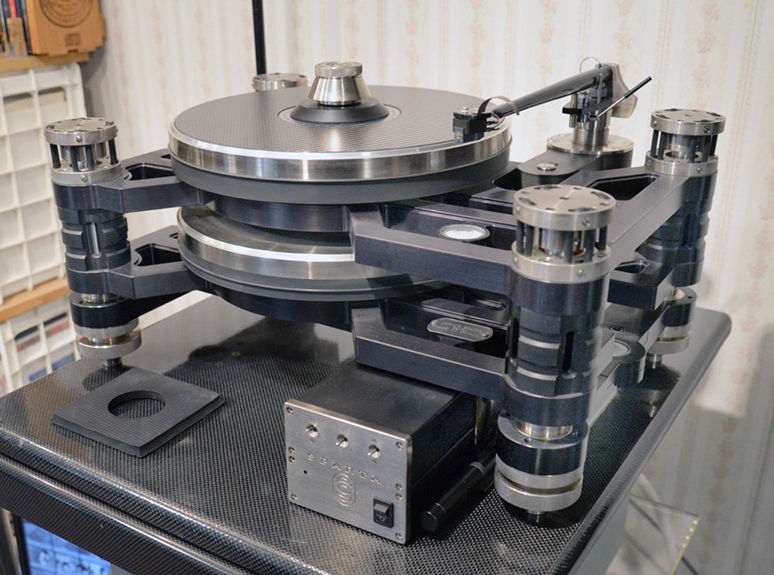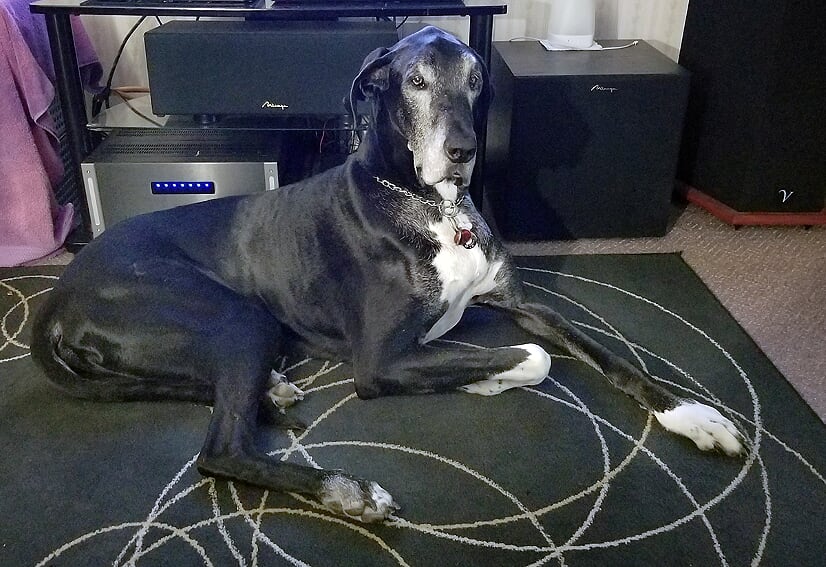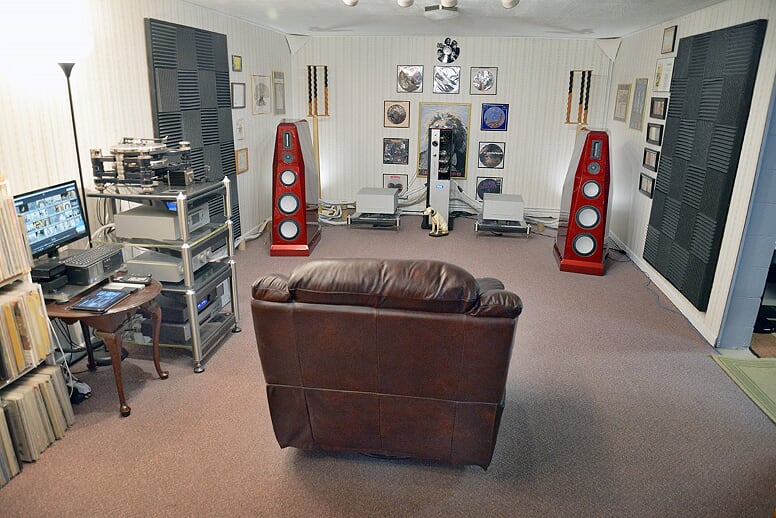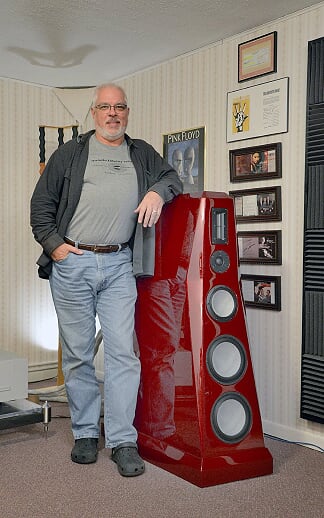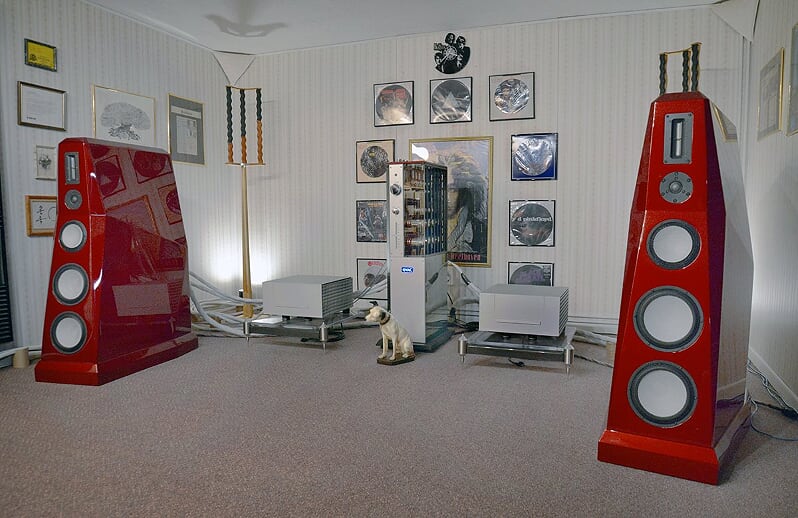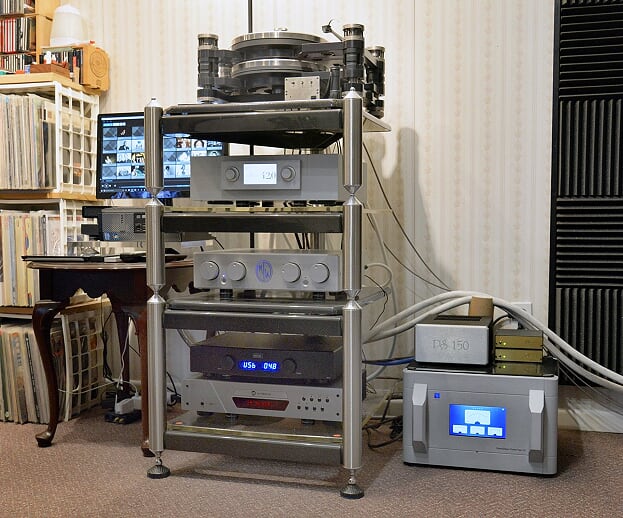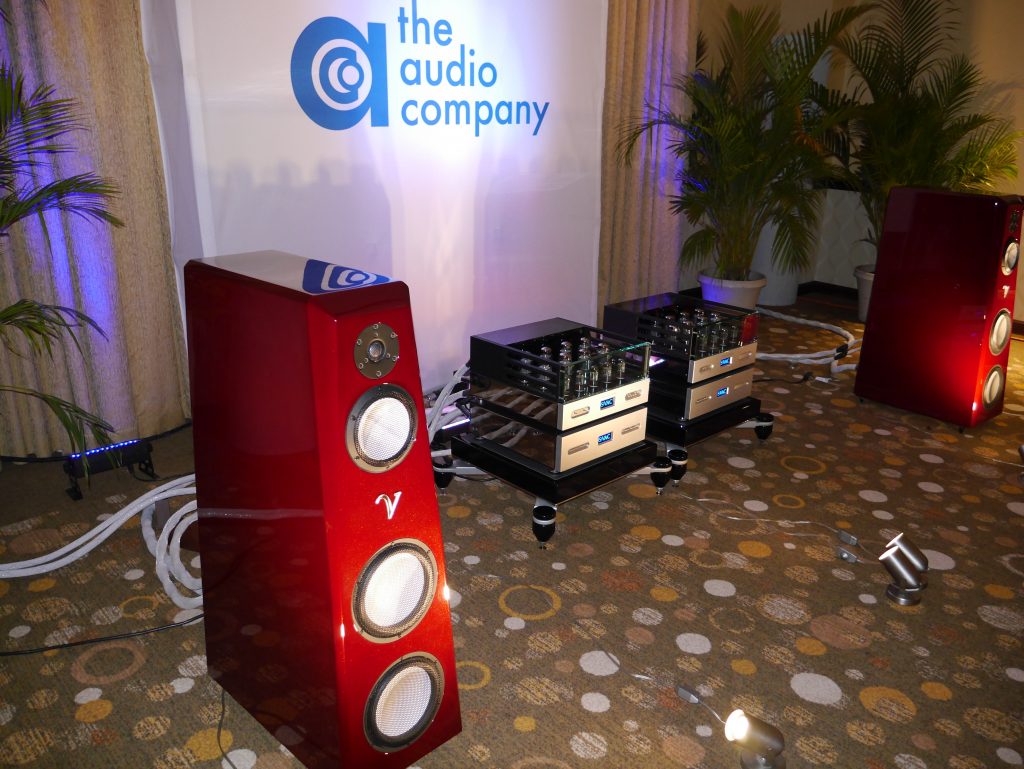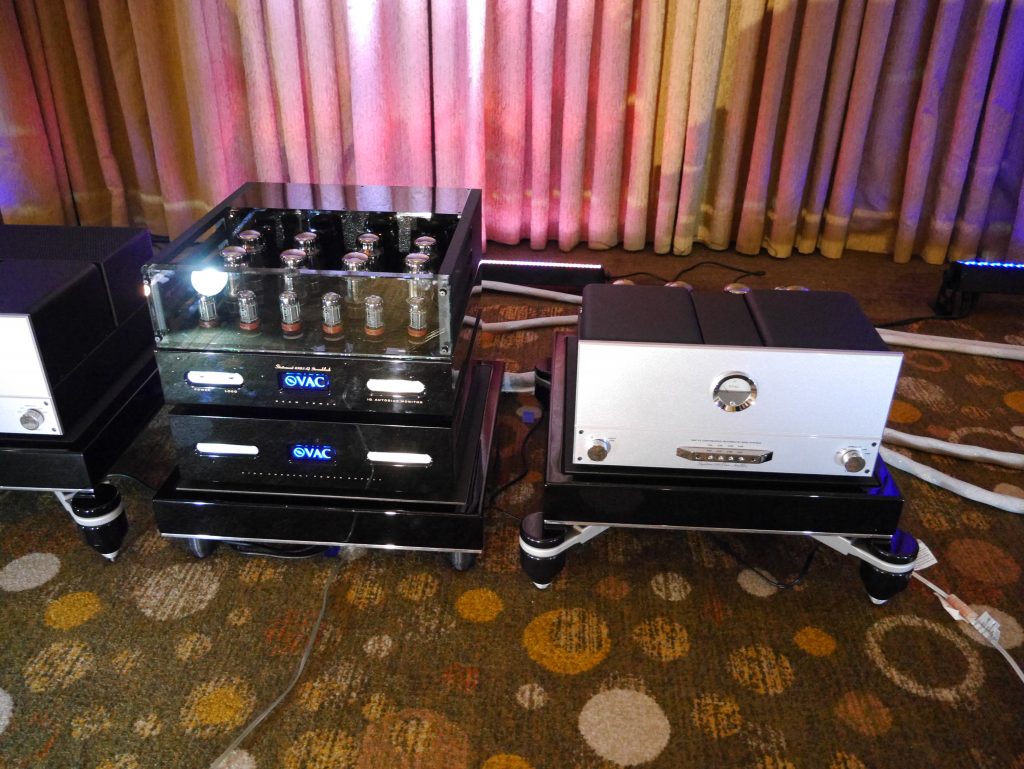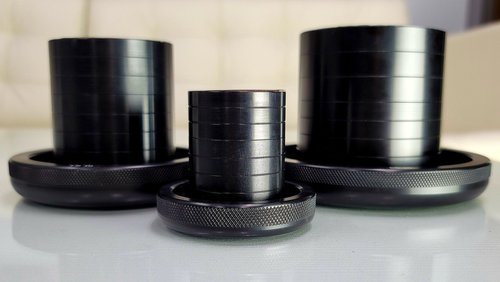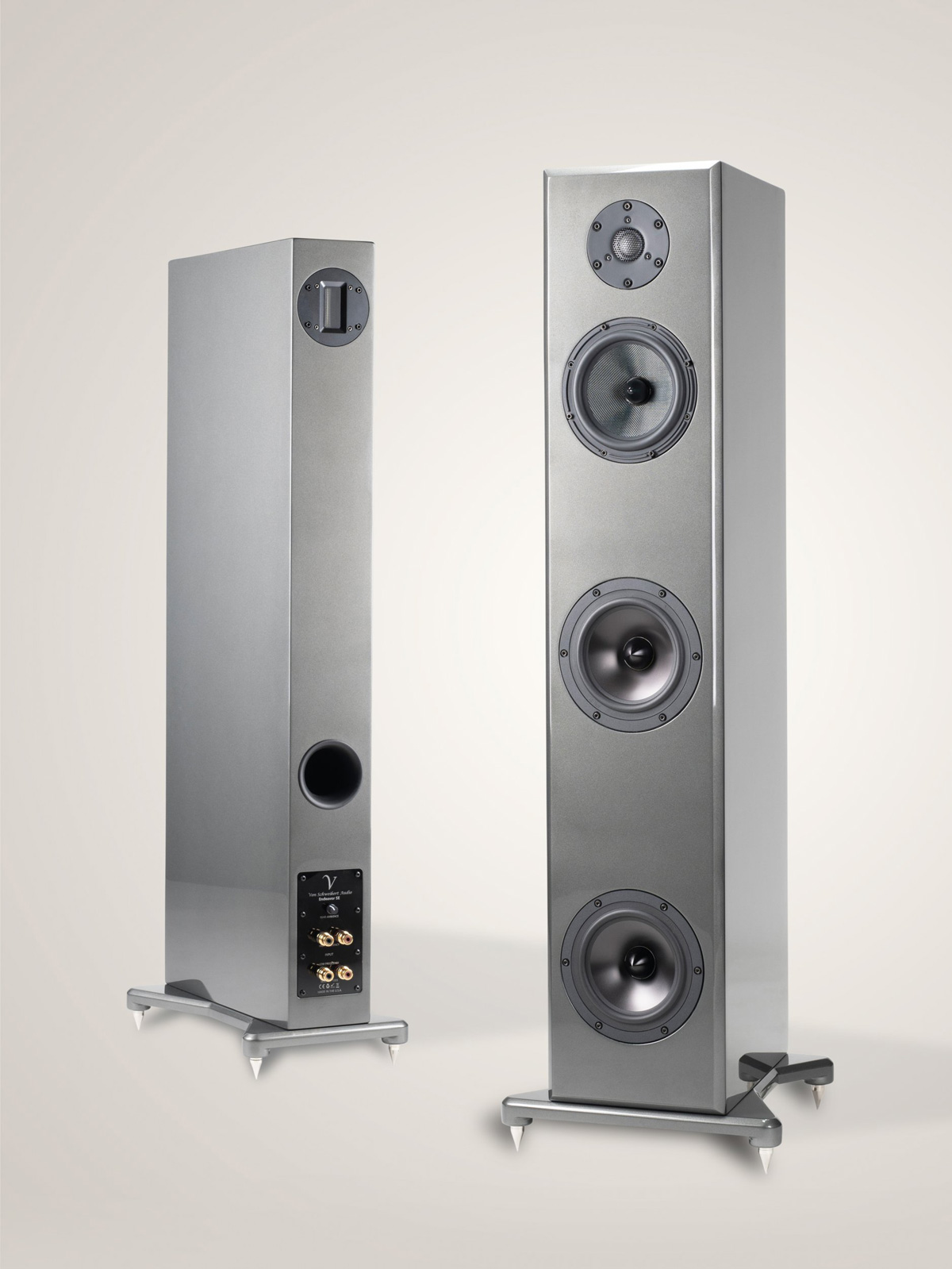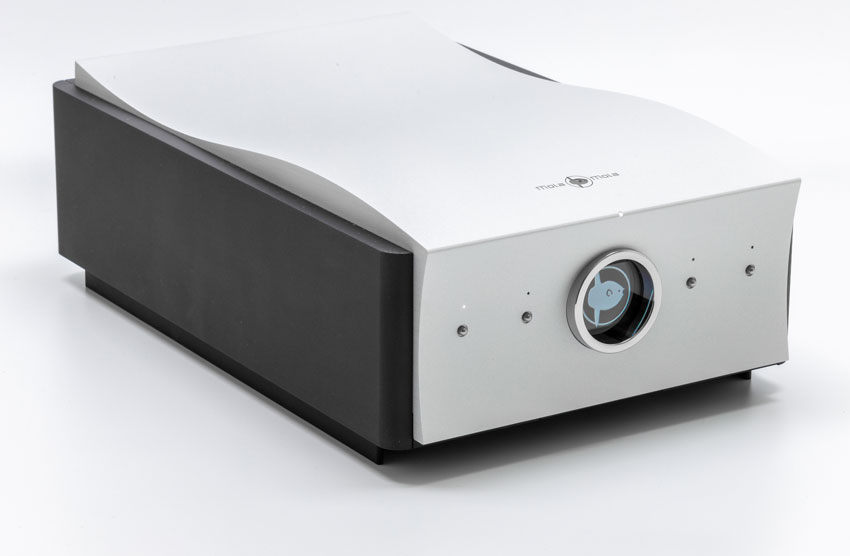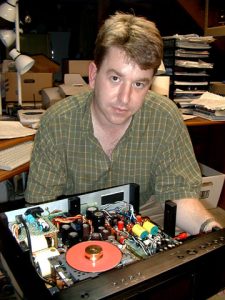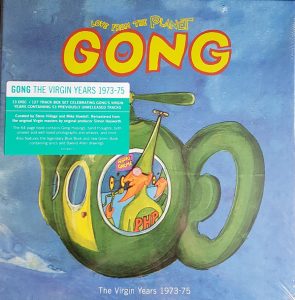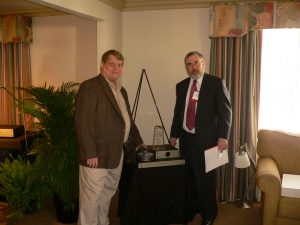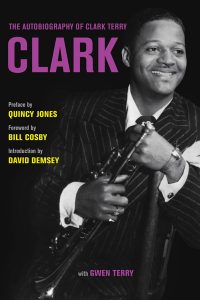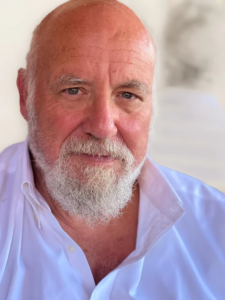Back to the Midwest-SR
In late January 2019, over the MLK holiday weekend no less, I ventured north by northwest from Florida to the wilds of exurban Indiana to pay my close audio bud, Greg Weaver, a long-overdue visit. I made a similar trek a year earlier to hear his then reference setup, namely Audionet's Max monoblock amps and matching preamp, the stunning GamuT Zodiac loudspeakers, Greg's stellar Kronos Sparta turntable, a loom of Stealth cables, and a gaggle of other goodies. This time around, while the core source components that anchored his earlier system remained unchanged, Dr. Weaver had replaced the stupendous GamuT Zodiac speakers and Audionet electronics with the brand-spanking new and even more stupendous Von Schweikert Audio ULTRA 9 loudspeakers and Valve Amplification Company's (VAC) Statement 450i iQ Integrated Amplifier.
The weekend began, much as it had on my last trip to Goshen (HERE), with a visit to the lovely Italian eatery Lucchese's. There, Greg and I again feasted on scrumptious home-cooked fare, guzzled fine wine, and gleefully swapped audio war stories before heading back to his place, a cozy abode that Greg shares with his wife Kim and three "horse-sized" dogs, Oscar, Aerie, and Luna. Let me state at the outset that the pictures that accompany this piece do not do justice to the size of Greg's canine "children," or to the equally gargantuan ULTRA 9 loudspeakers and VAC Statement 450i iQ amplifier that anchored his reference system back then.
The ULTRA 9 loudspeakers are essentially scaled-down versions of the company's celebrated ULTRA 11 flagships, the 9s tipping the scales at nearly 600 back-breaking pounds per side and costing a bank-bursting $200,000 the pair. By the same token, the VAC Statement 450i iQ amplifier (offered at a paltry $150,000) can be thought of as a scaled-down version of the firm's Statement line and phono stages, here coupled to a modified version of VAC's stellar Statement 450S stereo power amplifier, all consolidated into a single, but certainly no less impressive, tower-oriented chassis. The rest of Greg's system is pretty much the same as what I reported on last year. You can read all about Greg's exceptional assortment of gear at his "audio analyst" website HERE.
It should go without saying that these are reference-caliber components designed for audiophiles with big listening rooms, a desire to test the dynamic and low frequency limits of their rooms and ears, and the equally big budgets necessary to pull all of this off.
Shattering Ceilings and Recalibrating Sonic Boundaries
Those of you unfamiliar with Greg's work should know that he writes for three respected audio journals: PF, Enjoy the Music, and The Absolute Sound (where he serves as a senior writer). In many ways Greg and I sit at opposite poles when it comes to musical tastes and genre preferences. Greg is a classic power rock kind of guy. He inhabits the worlds of David Bowie, Santana, Supertramp, Stevie Ray Vaughn, and the like as passionately as I live in the modern jazz world. Greg loves Beethoven (so do I), but he isn't a big fan of the Berb, Schoenberg, Webern school (I am), and he just doesn't get Bill Evans, a fact he readily acknowledges. On the other hand, I share with Greg a love of Weather Report, David Bowie, and Santana, too. More importantly, although our choices in music differ, our core audio sensibilities very much align, and to a striking degree, particularly along four key vectors: tonal precision and timbral accuracy, micro-dynamic fluidity, sound-staging and imaging integrity, and overall musical coherence.
I continue to marvel at how closely our opinions track on the relative strengths and weaknesses of given components and systems, and how points of discord (rare) boil down to our different listening preferences, not wholesale disagreements about what we have or haven't heard objectively.
So, when Greg reported that the VAC/VSA combo rocked in ways he had yet to come to terms with, I knew I had to hear this setup for myself. For those of you who instinctively jump to the end of pieces like this to read the review/preview summary, let me simply say this: in no small measure, the Von Schweikert Audio ULTRA 9/VAC Statement 450i iQ integrated amplifier combo reproduces music of all genres as convincingly, realistically, and captivatingly as any high end system I have ever heard, period. In my estimation, the ULTRA 9s are the most realistic transducers I have yet encountered, and in the right space, exceed the performance of the stellar ULTRA 11 towers in one key area: overall coherence, at least to my ears.
Say what you will about the ULTRA 11's nearly unrivaled capacity to reproduce in totally unfettered fashion music's full dynamic sweep, scale, and impact, the 11s sound, again to my ears, not entirely of a piece, at least under the show conditions where I have heard these behemoths play (for his part, Greg strongly disagrees with my assessment here). Not so the ULTRA 9s, and certainly not when playing in Greg's listening room, driven there by the stunning VAC Statement 450i iQ integrated, and fed by the same stellar sources that so tickled my audio fancy a little over a year ago. To my ears, the 9s offer much of the power, scale, and impact of the mighty 11s, but add to that heady mix improved inter-driver coherence, better image focus, and superior overall musical articulation.
So, on a musically compelling work like Domino, from Polish trumpeter Tomaz Stanko's 1999 release From the Green Hill (ECM), the VSA/VAC combo possesses the almost preternatural ability to place old man Stanko, bassoonist, and saxophonist John Surman, and the rest of the stellar lineup literally in the room where they "materialize" as living, breathing, flesh-and-blood musicians. Additionally, the 9s do what few other speakers in my experience can: size naturally and realistically instrumentalists, vocalists, and ensembles within the listening space. Refreshingly, what one won't hear are 12-foot wide pianos, miniaturized acoustic basses, or vocalists occupying multiple spaces within the soundstage at the same time, that is, unless such aural anomalies are embedded in the recording.
On the other hand, what one will hear are performers within the recorded sound-field that are realistically sized in and of themselves, and in relation to the other performers in the ensemble. In this sense, the 9s reproduce the full gravitas and weight of the actual performance in a given listening room, and do so without sacrificing the speed, coherence, air, articulation, and overall intelligibility of smaller models, particularly top-flight two-ways.
Nor is the ULTRA 9 a musical one-trick pony. As good as it sounds reproducing small scale jazz and classical works, it laughs its proverbial head off when asked to reproduce meatier fare like symphonic blockbusters and power rock played back at near concert hall levels. What the 9s deliver so damn well is near horn-like dynamic scaling (along with a great horn's ability to output massive sound pressure levels with little to no discernible noise artifacts), near panel-like transparency, you-are-there presence and projection capabilities, superb speed and musical articulation, and industry-leading coherence. Center-of-the-earth low end reach and grip, and class-leading upper octave frequency extension, smoothness, and detailing almost seem like icing on the proverbial cake here.
In all fairness, I have not heard the 11s in a properly configured and acoustically treated listening space, one of the key privileges I enjoyed during my trip to visit Greg in Goshen. So, it may very well be the case that in the right space, with the right room treatments, and more familiar sources, the 11s would speak to me in much the same way that its baby brothers did at Casa Weaver. Of course, Damon and Leif could always invite me to California to hear what the 11s can do in a dedicated space so that I can make a truly informed assessment of the two speakers under optimal conditions.
Parting is Such Sweet Sorrow
All of which raises a series of very big questions for me, namely, how does the VSA design team get all those drivers, especially when composed of different materials, to cohere into a sonic whole, and how do they keep those big boxes from vibrating away a good portion of the life, speed, focus, and bloom that allows one to suspend disbelief and imagine that s/he is hearing the real thing? Pulling off this not inconsiderable sleight of hand represents a major accomplishment for the Von Schweikert (as in Albert and Damon)/Swanson (as in Leif) team.
I'll leave it to Greg to discuss the technical aspects of the ULTRA 9 design that make these sonic results possible in his upcoming review of that product, and the VAC integrated amp for that matter. In the here and now, let me say unequivocally that the ULTRA 9 validates, in no uncertain terms, the effectiveness of VSA's Version 2.0 Aktive Cabinet Vibration Control system and triple-wall cabinet construction technology, and Albert von Schweikert's proprietary crossover designs to stunningly realistic effect. It, along with what I consider to be its natural partners in crime, Kevin Hayes and VAC's superb Statement-level electronics, represent the current state of the art in high end musical reproduction, and serve as a bewitching counterargument to the various alternative approaches employed by other manufacturers of top-flight gear.
Kudos, gentlemen!
Homeward Bound: The Florida Audio Expo
Let me state upfront that I initially had no intention of attending the Florida Audio Expo held at the Embassy Suites by Hilton Tampa Airport Westshore in balmy Tampa, Florida from February 8-10, 2019. I had just returned from my delightful, but frigid road trip to Goshen, Indiana, and was preoccupied with a major family crisis that left me reeling spiritually, emotionally depleted, and genuinely dreading the 90-minute drive from Orlando to Tampa (along with our simply delightful Central Florida traffic). However, Greg insisted that I consider attending the show if only to reconnect with the VSA team, to convey his well-wishes to the enormously talented Doug Hurlburt of Dynamic Sounds Associates (DSA), and to sniff out new high-end goodies to hear.
So, against my better judgment, I made the drive down to Tampa from Orlando late in the morning on the second day of the Expo. Traffic, as expected, was brutal, but I enjoyed very good weather on the trip down, and as I soon discovered, the change in scenery did me a world of good. When I arrived at the Hilton, I readily admit that I didn't expect to see or hear much that interested me. To my delight, what I encountered instead was a very well organized (if small) high-end audio show that seemed well-attended, adequately well covered by the high-end press, and in the several rooms that I visited Saturday afternoon, blessed with very good sound.
Please note that I didn't take a lot of pictures during my brief visit, but I did take a few. Also, please don't read this as a formal show report. I didn't cover the event with the depth and focus that I would normally dedicate to a show visit. Instead, I suggest that you view my brief observations as an invitation to consider attending the Florida Audio Expo in 2020. Based on my brief time at the 2019 show, what I saw, and most importantly, what I heard, I don't think you'll regret the decision.
My first stop was the Atlanta-based Audio Company/VSA/VAC suite where the new VSA ULTRA 55s and a stack of VAC reference-level amps literally burned down the proverbial house. Not to mince words, this room rocked. On the Talking Head's late cold war era masterwork Speaking in Tongues, here an LP of unknown provenance, I reveled in the dense harmonies of "This Must be the Place (Naive Melody)", the system delivering punchy bass and truly impressive scaling. Vocals projected into the room with remarkable layering and focus. In the same vein, Brubeck's "Blue Rondo" bounced and shimmered with musical life, delivering spot-on tone and timbre and holographic staging, this from an Acoustic Sounds 45 LP release. Paul Desmond's wispy, airy alto soared on this track with his west coast "cool" and controlled vibe reproduced fully intact.
The VSA ULTRA 55 speakers that anchored the system I focused on (the Audio Company/VSA/VAC team actually had two top-flight systems on display in their massive exhibition room), a radical rethinking of the classic VR-55 platform, boasted the full suite of ULTRA-level upgrades, meaning all MasterBuilt Audio internal wiring, a custom 7" reinforced ceramic Accuton driver, twin 9" reinforced ceramic mid-bass Accuton drivers, a custom ScanSpeak Beryllium tweeter, and one rear-firing 5" aluminum ribbon super tweeter. The ULTRA 55 also features enhanced triple-wall cabinet construction, hand-selected and better performing capacitors and inductors in the crossover, and a simply gorgeous automotive paint finish (here rocket red).
The VR-55 Aktive remains in the VSA lineup at its current price of $60K per pair, while the new ULTRA version tips the scales at a cool $90K the pair. The ULTRA 55 sang with the same overall transient-rich speed, precision, clarity, and coherence that I heard at Casa Weaver just two weeks earlier, only losing out to the mighty 9s in bass reach and power, soundstage scaling, and dynamic wallop. The Ultra 55 is one amazing speaker.
Here is the detailed component lineup and unit price breakdown: Von Schweikert Ultra 55 loudspeakers ($90,000/pair), Von Schweikert V12XS Shockwave subwoofer ($11,500 each x2), the VAC Statement 450iQ mono power amplifier ($120,000/pair), VAC Statement phono stage ($80,000), VAC Statement line stage ($75,000), Esoteric Grandioso P1 digital transport ($38,000), Esoteric Grandioso D1 monoblock DAC ($38,000 each), Esoteric Grandioso G1 master clock ($26,000), Esoteric N-01 streamer/renderer/DAC ($20,000), Kronos Pro turntable with Black Beauty tonearm and Ultracap power supply ($51,000), Airtight Opus 1 cartridge ($16,000), Critical Mass Maxxum audio rack ($6250 – here utilizing 12 separate rack components at $75,000), Critical Mass Maxxum amp stands ($6250/each), and a loom of gorgeous MasterBuilt cables (I didn't get the cable prices – sorry).
We're obviously talking "if you have to ask" prices here, folks!
The Wilson Audio Specialties Sasha DAW floor-standing speakers also caught my ear and my musical imagination. Like the larger and pricier Alexx speakers, the Sasha DAW are entirely the creation of the late Dave Wilson's very talented son, Darryl. Tethered to a gaggle of reference-level Audio Research tube electronics, the newest iteration of the beloved Sasha produced the most stunningly beautiful sounds I have ever heard from a Wilson speaker.
The exhibition room was helmed by none other than the great Peter McGrath, the supremely talented recording engineer and Wilson Audio salesman / spokesperson par excellence. Peter wooed this reviewer with his charm, wit, and a well-rounded sampling of digital recordings of solo piano (from his personal collection no less) that rank amongst the finest, most realistic-sounding recordings I have ever heard. Peter's piano tracks captured the weight, scale, dynamism, and musical bloom of the piano better than any I can recall, the ARC Reference 160M mono amps surrendering only the bottom most low bass heft and weight from McGrath's stellar digital files.
Quick, detailed, and exceptionally articulate, the Sasha is amongst the finest speakers I have heard in recent years. Wilson will not be able to keep up with market demand for this model, I predict. I say this as someone who has not always liked the Wilson house sound.
Here is the stellar lineup: Wilson Audio Sasha DAW in standard finish ($37,900; $38,900 in upgraded finish); Audio Research REF160M mono amps ($30,000/pair); REF 6 stereo preamplifier ($15,000); Reference Phono 3 vacuum tube phono preamplifier ($15,000); Reference CD9 compact disc player/DAC ($14,000); VPI HW-40 turntable ($15,000); Kiseki Purple Heart NS moving coil phono cartridge ($3200); Transparent Audio Cables 8' XL speaker cables and $17,000 balanced interconnect cables starting at $11,000; 1pr. 1.5m XL balanced interconnects at $11,340; 1m Reference phono cable RCA at $3200; Six 2m Std. Config. Reference power cable at a cool $1200 each; Reference power isolator with power cord ($5995); Critical Mass Systems Sotto Voce 3-tier wooden equipment rack ($3500 starting price for a complete rack); Black Platinum Filter ($1995 each); and Black Sapphire amp stands ($995 each).
The Doshi Audio / Jeff Joseph room (fronted by Joseph's stellar Pulsar compact monitor speakers and a full suite of Doshi electronics) dazzled. Jeff placed the mighty-midget Pulsar speakers along the long wall of the room to maximize soundstage width. The payoff was a massive and massively detailed soundstage, with very naturalistic tone, exacting timbral fluidity, and surprisingly robust dynamic expressiveness. The Doshi stereo amplifier, a push-pull design using eight trusty EL34 output tubes (that deliver a healthy 65-watts into 8 Ohms) drove the Pulsar's with grace and authority. My notes indicate that the system gifted "remarkably (almost) full range" sound from the little Joseph's. This was world class sound, folks!
Sorry, but I did not gather pricing info here.
The last room that my notes cover was the À La Carte Productions room, a high-end retailer located in Deland, Florida that fronted an assortment of tasty gear from the likes of Spendor, VPI, DSA and Ortofon. Again, my notes aren't very detailed here: remember that I visited the suite primarily to convey Greg Weaver's well-wishes to the genteel, self-effacing, and warm-spirited Doug Hurlburt. Doug was, however, kind enough to describe the theory and thinking behind his statement 125-watt Class A amplifiers, the recently released DSA Amp I monoblocks ($25,000 per pair – I did note the price of these babies). Oriented as towers (to leverage the benefits of natural convection cooling), the AMP I (in concert with the DSA line and phono stages) drove a pair of Spendor Audio D9 tower speakers to charming and engaging effect, the sound boasting tube-like sweetness, oodles of air, and superb midrange focus. If you aren't familiar with Doug's work, you should be.
Finally, apologies to Doug's partner in crime, David Sckolnik, who rightly reprimanded Doug and me for hovering too closely around the beautiful AMP I mono towers during one of his presentations. You know what they say: scorpions will be scorpions, and reviewers, well, reviewers.
Cheers!
All images courtesy of Greg Weaver




